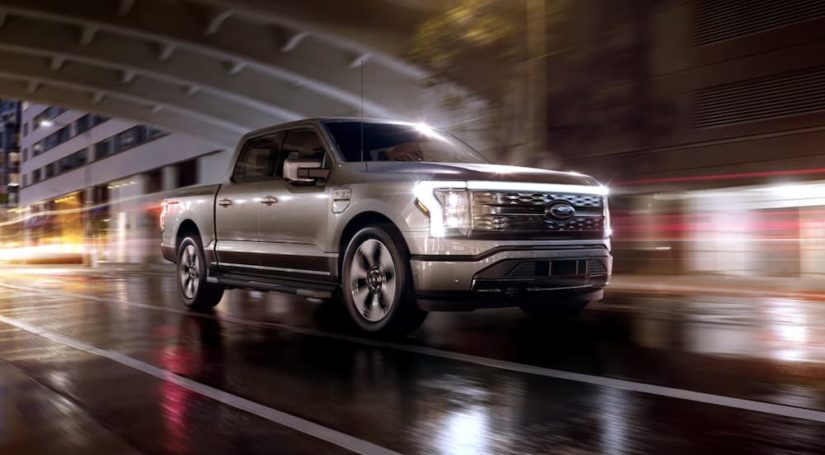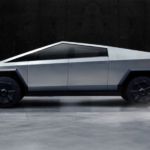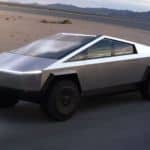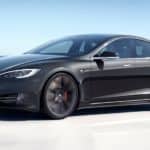The future is here, and it’s battery-powered. Need proof? Stop by a Ford Lightning dealer and learn about the benefits of an all-electric pickup truck, and you’ll wonder why you ever bought anything else. A word of caution to electric truck buyers: new technology always invites trendy alternatives that look futuristic and cool. It’s easy to assume that newer is better, but nothing trumps experience.
Consider the Ford Lightning vs Tesla’s upcoming Cybertruck. There’s no doubt Tesla features prominently in the EV landscape, but the difference between an EV sedan and an EV truck is substantial. Ford brings over 100 years of truck building expertise to the party, a fact that isn’t debatable even when the conversation is just about electrification.
Trucks are trucks, and most buyers choose them for their rugged durability. They need towing and hauling capacity and the utility of the pickup body style. Ford has manufactured millions of pickups over the past century. Tesla has built zero. As we compare these two vehicles, it’s an important and unassailable fact.
Which one deserves a spot in your driveway? We look beyond the splashy marketing and trendy styling and dig into what matters: capability and performance.
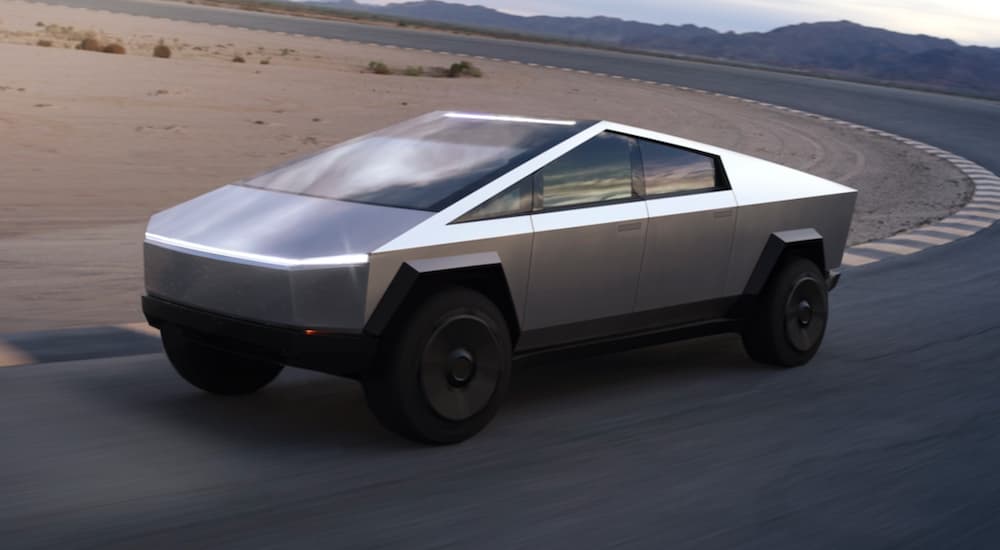
Built Ford Tough vs the Exoskeleton
Most pickup truck buyers we know are not fond of embellishment and fluff, which is why we question Tesla’s liberal use of non-automotive nomenclature when describing its upcoming Cybertruck. We’re treated to words like “exoskeleton” to describe the truck’s exterior. Sure, it’s edgy, but what does it mean? Further, Tesla engineers decided the Cybertruck would benefit from armored glass. Our question is, why?
These characteristics create more questions than answers. Yes, armored glass is cool, but is it necessary? And it begs the question, how much has it added to the Cybertruck’s price tag? Overall, the Cybertruck is designed for optimal aerodynamics. Unfortunately, it looks like something straight out of a Mad Max movie, and as such, traditional pickup truck buyers might be turned off. It’s OK to deviate somewhat, but if it ain’t broke, don’t fix it.
The Ford Lightning possesses many design qualities that are unique to EVs, including a futuristic architecture to support both motors and the battery pack. However, it still looks like a Ford F-150. Ford had an opportunity to design the Lightning more aggressively, but the fact that it remains true to its roots is a telltale sign that Ford listened to buyers.
Tesla, on the other hand, may be seeking a different buyer outside the traditional truck demographic. Maybe the Cybertruck will follow more of a Hummer trajectory, capitalizing on a high-end specialty buyer with discretionary income. You know, more like a toy collector.
Performance and Capability
A quick glance at Tesla’s website reveals a Cybertruck with extremely impressive hauling and towing capability. According to Tesla, it offers a max towing capacity of 14,000 pounds and 3,500 pounds of payload. Compared with the Lightning’s estimated 10,000 pounds of towing capacity and payload of 2,000 pounds, it sounds like the Cybertruck wins.
Not so fast, though. Dig deeper, and you’ll find that in order to gain that level of capability, you’ll have to buy the tri-motor version, which will set you back roughly $70,000. Compare that to the Lightning’s affordable base price of $42,000, and you should ask yourself if it’s worth almost $30,000 more or if you’d be better off settling for a gas-powered heavy duty truck for a whole lot less money.
Also, Tesla doesn’t talk about how towing and hauling heavy stuff will impact its estimated 250-mile driving range. Sometimes the specs don’t tell the whole story. Speaking of driving range, Ford estimates the Lightning is capable of achieving a 300-mile range, handily beating Tesla’s Cybertruck in an apples-to-apples comparison.
When it comes to performance, Tesla boasts that the Cybertruck delivers “more performance than a sports car.” Once again, this holds true for the high-end tri-motor trim, but in a side-by-side comparison with pricing being the common denominator, it’s a different story. The dual-motor Lightning boasts a mid-4 second 0-60 time, while Tesla’s dual-motor Cybertruck is essentially the same.
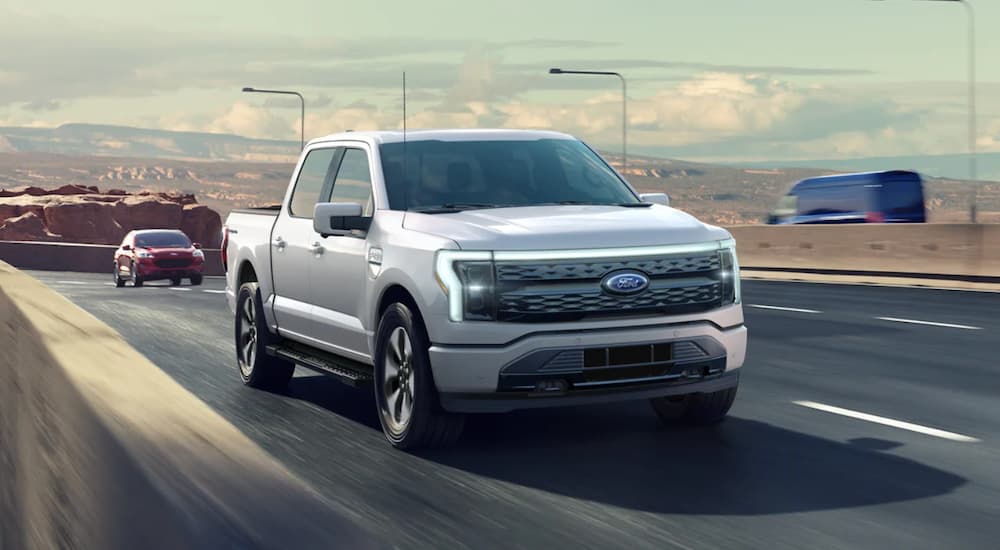
We Can’t Get Past the Styling
It may be repetitive, but it bears repeating: the Cybertruck doesn’t look like a pickup truck–at all. This may hold appeal for some truck buyers, but the extreme design departure feels gimmicky at this stage of the game. This is the first-ever round of electrified pickups to hit the American market: will Tesla’s extreme styling gamble pay off?
It’s only fair to recognize Tesla’s dominance in the sedan category. It took a while, but mainstream buyers eventually warmed to the Model 3’s otherworldly exterior lines. We can’t help but wonder if pickup buyers share the same sense of adventure. Can they picture themselves showing up to the job site in a stainless steel triangle-shaped “truck” with an armored windshield? It feels a bit conspicuous.
Ford’s more conservative design approach may help EV-hesitant buyers more easily overcome barriers like range anxiety. It’s a tough segment to win over to new technology. Many buyers simply need their trucks for work, and the idea of moving to an all-electric powertrain is already stressful; adding a quantum leap in design to something that looks like the Mars Rover might close that window permanently.
Tesla capitalizes on a utilitarian design philosophy, as evidenced by the spartan interior featuring a dashboard that looks more like a Carrera marble bar top. Aside from a giant touchscreen and an odd rectangular steering wheel with opposing grab handles, we can’t find any other cabin appointments. Well, except for the seats. In fairness, it’s a rendering, but we’re still scratching our heads.
Ford takes a softer approach, designing the Lightning’s dash around a similarly prominent touchscreen but reverting to more comforting components like an actual round steering wheel and other toggles and manual controls to support the screen’s function. The design still incorporates substantial technology and reliance on digital interfaces but still manages to maintain a comfortable and familiar aesthetic.
We concede that Tesla’s Cybertruck is poised to disrupt the pickup truck category just like the Model 3 reinvented the sedan. If you’ve got a spare $70,000, you can drive one of the most powerful trucks on the planet with tremendous capabilities to boot. You will turn heads and spark debates. You will be a trendsetter.
On the other hand, if you’re ready to go electric but value more traditional pickup truck lines, opting for a 2022 Ford Lightning is an easy decision. Absent the fanfare and buzz-worthy marketing; the Tesla Cybertruck is brand new: the first of its kind. That’s always a gamble. Choosing to buy from an established automaker with truck building experience is never a bad decision.
Are You Ready to Go All Electric?
Which of these trucks belongs in your driveway? It boils down to your appetite for risk and your comfort level with drawing attention. It’s going to take a while for the Cybertruck to blend in, which means everywhere you go, eyes are on you. That’s not a concern for some, but for others, it matters.
We can’t blame Tesla for wanting in on one of the most popular body styles in America. Trucks represent roughly 20% of all vehicles sold on average. Any major auto manufacturer that doesn’t offer a pickup truck is clearly not capitalizing on the American car market. It was simply time for Tesla to enter the ring, but we wonder if America’s truck buyers are ready for a vehicle like the Cybertruck.
